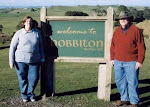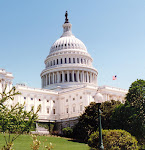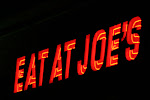Explosives
Nitrate esters
http://www.globalsecurity.org/military/systems/munitions/explosives-nitrate.htm-
On December 25, 2009, Umar Farouk Abdulmutallab, a Nigerian national, was accused of trying to ignite an incendiary device aboard a Northwest Airlines Flight headed to Detroit, MI; an act the White House declared "an attempted act of terrorism". The incendiary device was later identified by authorities of being a PETN-based device.
Nitrate (NO3-) (CAS No. 014797-55-8) is an inorganic anion resulting from the oxidation of elemental nitrogen. It is an essential nutrient for plant protein synthesis and plays a critical role in the nitrogen cycle of soil and water. Nitrates are produced by natural biological and physical oxidations and therefore are ubiquitous in the environment (Ridder and Oehme 1974). Most nitrate compounds are strong oxidizing agents and some can react violently with oxidizable substances and may explode if exposed to heat or shock.
Nitrates are produced by natural biological and physical oxidations and therefore are ubiquitous in the environment. Most of the excess nitrates in the environment originate from inorganic chemicals manufactured for agriculture. Organic molecules containing nitrate groups are manufactured primarily for explosives or for their pharmacological effects
NC [Nitrocellulose]
for many centuries gunpowder was the world's only explosive, and was not superseded until the discovery of guncotton. So long ago as 1832 Bracon discovered that woody fiber could be turned into an explosive by the action of concentrated nitric acid; and a few years later a French inventor, Dumas, tried to make cartridges of paper treated in similar fashion. If he had succeeded these would have been the first smokeless cartridges, but he failed; and it was not until 1845 that Schönbein, a German chemist, hit upon the proper method of treating cotton wool with nitric and sulphuric acids, so as to turn it into guncotton.
In 1847 an English firm, Messrs. Hall and Son of Faversham, began to manufacture guncotton, and military experts hailed it as the new explosive which would take the place of gunpowder. But this explosive was so terribly powerful that, when used in a gun or rifle, it blew the barrel to pieces. Worse than that, it was most dangerous to manufacture.
Two main problems had to be solved before it could be used as a gun propellant. First, the velocity of the explosion had to be reduced so that the charge weight required to propel the projectile would not shatter the gun tube. second, the density had to be increased so that a given charge weight would pack into a reasonable space. The first problem was solved in part by igniting NC instead of firing it with a detonator. The solution to the second problem actually solved both. In 1886, Vielle first colloided or gelatinized NC with alcohol and ether and, thus reduced the burning rate to acceptable levels. The procedure significantly increased the loading density of NC, establishing it as the foundational element in gun propellants used through the present day. Further developments resulted in materials that could be added to improve stowage qualities, reduce or eliminate flash, reduce hygroscopicity, reduce flame temperature, and even increase the propellant force or impetus.
Munitions manufacturing processes may generate nitrocellulose (NC) fines. Disposal of these fines is difficult because of their reactive nature. Composting has potential to be a safe and cost effective means of disposal. Open burning is no longer permitted in several states and is expected to banned nationally in the future. Open detonation is also the least acceptable form of disposal because of uncontrolled pollution by-products. In its role as the Department of Defense Manager for conventional munitions, Army must be able to dispose of Propellants/Explosives/Pyrotechnics production wastes. In composting, a controlled biological process, microorganisms convert biodegradable hazardous material to innocuous, stabilized by-products, typically at elevated temperatures between 50 - 55 °C. The increased temperatures result from heat produced by the microorganisms as they degrade the organic material in the waste. The NC fines are mixed with bulking agents and organic amendments, such as wood chips and animal and vegetable wastes, to enhance the porosity of the mixture. Maintaining moisture content, pH, oxygenation, temperature, and the carbon-to-nitrogen ratio achieves maximum degradation efficiency.
NG [Nitroglycerin ]
Nitroglycerin (NG) [Synonyms: 1,2,3-Propanetriol trinitrate; glycerol trinitrate; nitroglycerol; NG; trinitroglycerol; NTG; trinitrin] is an oily liquid at room temperature; colorless in pure form and pale yellow or brown in commercial form. It is used in manufacture of dynamite, gunpowder, and rocket propellants, and as a therapeutic agent primarily to alleviate angina pectoris. NG is used to make smokeless gun powder and rocket propellants. Single-base powders contain only nitrocellulose, double-base powders contain nitrocellulose and NG, and triple-base powders contain nitrocellulose, NG, and other combustible materials.
In 1847 a new explosive came into being. This was nitroglycerine, made by treating glycerine with nitric and sulphuric acids. But at first it was even more dangerous to handle than guncotton, for the least shock exploded it, and its violence was terrific.
The great chemist Alfred Nobel tried to improve it by mixing it with gunpowder, but the powder did not absorb all the nitroglycerine, and accidents of the most terrible kind became more and more frequent. Yet the new explosive, being liquid, could be poured into crevices in rocks, and was so useful as a blasting agent that its manufacture went on until a large vessel carrying cases of the explosive from Hamburg to Chili blew up at sea. The ship was blown to bits and her crew killed, and the disaster caused so great a sensation that the manufacture of nitroglycerine was prohibited in Sweden, Belgium, and in England. But Nobel still continued his experiments, and at last, after trying sawdust and all other sorts of absorbents in vain, found the perfect absorbent in the shape of keiselguhr-a sort of earth made of fossil shells. The mixture is what we know to-day as dynamite; and in spite of the fact that modern chemistry has produced very many new explosives, some of terrific power, dynamite remains the safest and most widely used of all explosives.
Nitroglycerin (NG) is a vasodilator and has been associated with acute episodes of angina pectoris, myocardial infraction, and sudden death. Workers engaged in the production or use of dynamite are potentially exposed to mixed vapors of nitroglycerin (NG) and ethylene glycol dinitrate (EGDN). Initial exposure to NG (or NG:EGDN mixtures) characteristically results in an intense throbbing headache that begins in the forehead and moves to the occipital region. Volunteers developed mild headaches when exposed to NG:EGDN vapor at concentrations of 0.5mg/m^3 for 25 minutes. It has been suggested that at least some workers may develop headaches at concentrations in excess of 0.1 mg/m^3. Other signs and symptoms associated with initial exposure include dizziness, nausea, palpitations, and decreases in systolic, diastolic, and pulse pressures. These initial signs and symptoms, including headache, are indicative of a shift in blood volume form the central to the peripheral circulatory system, initiated by dilation of the blood vessels.
After 2 to 4 days of repeated NG exposure, tolerance to the vasodilatory activity occurs, probably as a result of compensatory vasoconstriction. Tolerance may be lost during periods without NG exposure, such as weekends and holidays. Chronic repeated exposures to NG and NG mixtures also have been associated with more serious cardiovascular effects, including angina pectoris and sudden death.
Signs and symptoms of ischemic heart disease were observed in nine munitions workers involved in handling a nitroglycerin-cellulose mixture. Within 1 to 4 years of initial exposure, these workers developed nonexertional chest pain, which was relieved either by therapeutic nitroglycerin or by returning to work after the weekend. Coronary angiography performed in five of the patients showed no obstructive lesions. In one patient, observed while in a withdrawal state, coronary artery spasm was demonstrated and readily reversed by sublingual nitroglycerin.
Sudden deaths in previously healthy workers have been reported among those exposed to NG or to NG: EGDN mixtures. Like the attacks of angina pectoris, sudden deaths occurred most frequently during brief periods away from work, in particular on Sunday nights or Monday mornings. In most cases, there were no premonitory signs or symptoms although some subjects had anginal episodes during brief periods away from work. Atherosclerotic plaques, with or without thrombosis, have been found in the coronary arteries of workers at autopsy, but their coronary arteries generally were not occluded to the same extent as those of unexposed workers who had died suddenly.
The pathogenesis of the sudden death syndrome has been postulated to be due to withdrawal of coronary vasodilators (e.g. NG), resulting in vasoconstriction with acute hypertension, or with myocardial ischemia in workers adapted to and dependent on NG to maintain a minimum level of coronary flow. A second contributing mechanism for coronary artery toxicity due to NG may relate to so-called aging of the vessels due to repeated dilation. Other theories suggest that sudden deaths may be related to peripheral vasodilation consequent to reexposure of NG.
Estimates of exposure levels associated with sudden death have not been made because workers typically absorb considerable amounts of NG through the skin in addition to inhalation.
Employees handling NG should be given personal protective equipment to prevent the absorption of NG through the skin. However, neither natural rubber nor synthetic rubber gloves, including neoprene gloves, are impervious to NG. The wearing of such gloves tends to hold the chemical in contact with the skin, thus promoting its absorption. Preferably, cotton-lining gloves should be worn underneath nitrile gloves and both gloves changed ever 2-1/2 hours (USAEHA Technical Guide 24).
More recent studies have suggested that the effects of long-term workplace exposure to NG may not be completely reversed after exposure is terminated. Former workers may be at increased risk for cardiovascular mortality for months to years after exposure has ceased.
Individuals with preexisting ischemic heart disease should not be assigned to work where significant exposure to NG may occur. Early identification of cardiovascular disease is the primary goal of medical surveillance of nitroglycerin workers. A preplacement examination must be administered to all new employees occupational histories, a physical examination, and indicated laboratory tests, record of their pulse rates. Periodic examinations should be conducted semiannually, with the same focus as the preplacement examination. During the periodic examination, the physician should be aware that headaches that occur during work shifts could indicate skin absorption of nitroglycerin, even if air concentrations of nitroglycerin are below the PEL. Examinations with similar content are necessary when exposure to nitroglycerin has been terminated, although surveillance should perhaps extend beyond employment, due to the latency of the withdrawal effects. Monitoring should include pulse, blood pressure, CBC, urinalysis, resting EKG and lipid profile.
PETN [Pentaerythritol tetranitrate]
Pentaerythritol tetranitrate, C5H8N4012 (PETN), has a specific gravity of solids of 1.76 and a confined detonation velocity of over 25,000 fps. PETN is used as a priming composition in detonators, a base charge in blasting caps, and a core load for detonating fuse. PETN is very much used in Detonating Cord of which it is the explosive core (Primacord), where it develops a velocity rate of 21,000 feet per second. Detonating cord is insensitive to friction and ordinary shock, but may be exploded by rifle fire. It also detonates sympathetically with the detonation of an adjacent high explosive.
PETN is one of the strongest known high explosives with a relative effectiveness factor (R.E. factor) of 1.66. It is more sensitive to shock or friction than TNT or tetryl, and it is never used alone as a booster. It is primarily used in booster and bursting charges of small caliber ammunition, in upper charges of detonators in some land mines and shells, and as the explosive core of primacord.
During World War II the M9A1 2.36" Rocket Launcher (Bazooka) charge, with 8 oz of pentolite, could penetrate up to 5 inches of armor.
Demolition charge, M118, commonly called Flex-X or sheet explosive, consists of 4 half-pound sheets of flexible explosive packed in a plastic envelope. Each sheet is approximately 3 inches wide, 12 inches long, and 1/4 inch thick. Note: The exact explosive contained in an M118 charge varies with the manufacturer. At present, some manufacturers use PETN as the basic explosive. Others use RDX. Charges manufactured in the future may include other explosives.
PETN does not occur naturally, so the production and use of this kind of compound can lead to contamination of the environment. PETN is subject to biodegradation in untreated or unpreserved urine and feces. There also have been some reports of its degradation by bacteria, whose PETN reductase sequentially denitrates PETN into tri- and dinitrates (French et al., 1996). The last compound shown in the pathway, pentaerythritol dinitrate, is degraded further to unknown products.
In 1995 Haustein KO, Winkler U, Loffler A, Huller G. of the Abteilung Klinische Pharmakologie, Medizinische Hochschule Erfurt, Germany reported on a study of PETN's cardiovascular effects. The effects of 80 mg pentaerithrityl-tetranitrate (PETN) as suspension or formulated as tablets were compared to placebo in a single blind, randomized, crossover study in 18 healthy subjects (study A), and the bioequivalence of two tablet formulations (marketed Dilcoran 80 vs a new formulation) was studied in 24 healthy subjects after administration of single oral doses of 80 mg PETN according to a placebo controlled, randomized, double blind, two-way crossover study design (study B). The perfusion of the right middle finger was measured by rheography (altitude A of the changes of resistance and of the incisure D) before and 24 h post-dose, and blood pressure and heart rate were measured in supine position at the same time. The values of area under curve (AUC) of the ratio A/D were calculated by the trapezoidal rule. In study A the mean A/D-values were reduced from about 2.0 to about 1.3 after intake of PETN (solution or tablet) with a minimum 60 to 90 min postdose (solution) and 2 h postdose (tablet). A significant reduction in this ratio was seen up to 8 (solution) or 12 h (tablet) post dose. Changes in blood pressure were not observed while the heart rate decreased in the subjects of all three groups 1 to 2 h postdose followed by an increase by 6 to 10 beats per min. After subtraction of the AUC values of placebo from the PETN-derived AUC values, mean values of 6.61 (SD 1.52, solution) and 7.25 (SD 1.48, A/D*h, tablet) were calculated (p > 0.1, study A).
EGDN [ethylene glycol dinitrate]
Ethylene Glycol Dinitrate [SYNONYM(s): Glycol dinitrate; Nitroglycol; Dinitroglycol; EGDN; Glycerin trinitrate] is a colorless to yellow, oily, odorless liquid. It is an explosive ingredient (60-80%) in dynamite along with nitroglycerine (40-20%).
EGDN and NG are used with a mixture of sodium nitrate and an absorbent, often wood pulp, to produce dynamite. EGDN is added to lower the freezing point of the EGDN/NG mixture and is currently the major component. The EGDN/NG ratio is about 8/2 or 9/1. This is the only commercial use for EGDN. Because EGDN is more volatile than NG, there is usually more airborne EGDN than NG from the dynamite mixture. In 1976, about 250 million pounds of dynamite, containing 5 to 50% EGDN/NG, were produced by U.S. manufacturers.
Headaches have developed in workers exposed to 0.4 to 0.67 mg/m3 for 25 minutes; all workers had decreases in blood pressure [Trainor and Jones 1966]. Ethylene glycol dinitrate and nitroglycerine are vasodilators and initial exposures result in headache, dizziness, nausea, or decreases in blood pressure; however, workers became tolerant of the vasodilatory activity after 2 to 4 days of exposure.
Angina pectoris has been reported among workers who were exposed to EGDN and/or NG. In those affected, the angina usually occurred in periods away from work. Sudden deaths without any apparent cause have also been reported among these workers. The deaths, like the angina, occurred more frequently during periods away from work. In most cases, the workers who died suddenly had no symptoms other than angina during periods away from work. The deaths are thought to be related to compensatory vasoconstriction (tolerance) induced by repeated exposure to the substances. Vasoconstriction is thought to lead to spasms of the coronary arteries and then the related angina pectoris and sudden deaths.
No data on acute inhalation toxicity are available on which to base the IDLH for ethylene glycol dinitrate (EGDN) and/or nitroglycerin. The chosen IDLH, therefore, is based on chronic toxicity data concerning the physiological response of animals to EGDN. According to Patty [1963], rats and guinea pigs survived 6 months of exposure to 500 mg/m3 (80 ppm) EGDN with the only effect being slight drowsiness and some Heinz body formation [Stein 1956]. Although Patty [1963] stated that EGDN is more toxic for cats and rabbits, the chosen IDLH is still probably conservative because cats given 2hour daily exposures to 21 ppm EGDN for 1,000 days exhibited only marked blood changes [von Oettingen 1946]. However, because of the assigned protection factor afforded by each device, 2,000 × the OSHA PEL of 0.1 mg/m3 (i.e., 200 mg/m3) is the concentration above which only the "most protective" respirators are permitted.



















































